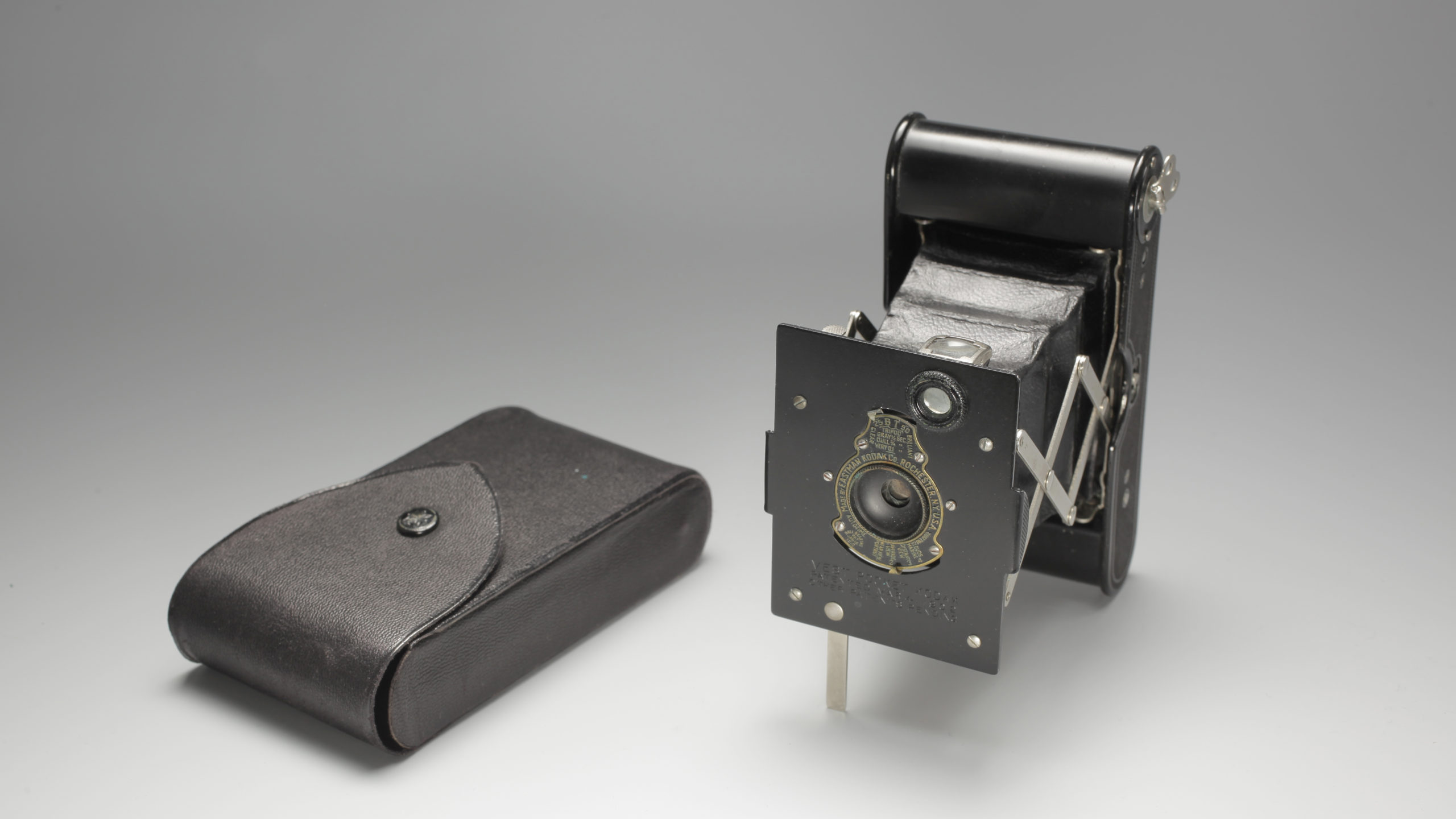Vest Pocket: the soldier’s camera?
As its name suggests, the Vest Pocket was a camera small enough that it could fit in a vest (or jacket) pocket. This foldable camera’s reduced size was also due to the use of 127 format film, which was more compact than its predecessors. Its size, the simplicity of its use and its affordable cost made it a great success after its release in 1912.
During the First World War, Kodak launched an advertising campaign in the United States encouraging recruits to buy this camera. It was depicted as a way to relieve the boredom in the training camps where soldiers were stationed before being sent to Europe, and a way to share their everyday life with loved ones. In France, advertisements for the Vest Pocket appeared in the Photo-Plait catalogues, describing the camera as “the soldier’s Kodak”. This would appear to suggest that everyone had their own Vest Pocket at the time. In actual fact, it seems to have been owned mainly by officers and a handful of soldiers from well-to-do backgrounds.
Despite the official ban on taking photographs at the front line, to protect the secrecy of military operations, countless photographs were taken. Some illustrated newspapers even took advantage of the abundance of images and organized contests rewarding the best amateur war photography.


